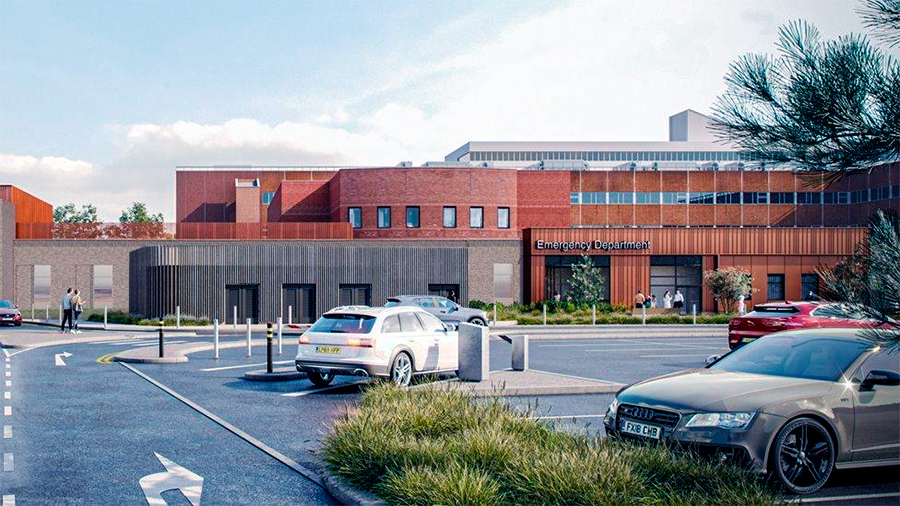Medicine and Consumer Loans: The Line Between Necessity and Luxury
When a medical bill lands, the question isn’t always whether a procedure is critical. The more urgent question often becomes: how will I afford it? Loans are filling that gap. From surgeries and emergency dental care to fertility treatments and cosmetic procedures, more people are turning to borrowed money to fund their health-related decisions. But not all procedures are equal — and not all loans are created with the borrower’s best interest in mind. The difference between getting what’s necessary and signing up for debt that lingers long after the results fade is often just a matter of timing, pressure, and clarity.
Medical Loans: An Expanding Reality
Healthcare costs are rising steadily around the world. Even in countries with some level of public insurance, out-of-pocket expenses are growing, pushing consumers toward private financing. In the U.S., for example, one in six adults has medical debt. In Europe, elective procedures like dental implants or IVF often fall outside national health coverage. As a result, consumers use loans, credit cards, or payment plans to cover the difference.
Providers increasingly offer financing directly. This makes access easier, but it also blurs the lines between medical advice and salesmanship. Clinics now present financing options alongside treatment recommendations. That shift changes the patient’s mindset — from a medical setting to a financial transaction. With quick approvals and marketing-heavy language, the loan becomes a default part of the decision-making process. And because approval is often based on income rather than need, even patients with questionable financial stability are offered access to credit.
The rise of fintech platforms has accelerated this trend. Many new players offer embedded financing at the point of service, combining technology with emotional leverage. The convenience is powerful — but so is the temptation. For patients already stressed or in pain, the path of least resistance is often the one that leads to a signature.
When Treatment Is Urgent — and When It’s Not
The most defensible use of medical loans is when delay threatens a person’s life or health. Emergency surgeries, cancer treatments, or urgent orthopedic care may leave no room for hesitation. When insurance coverage is partial or unavailable, borrowing can become the only way forward. In these cases, the value is self-evident — the benefit of immediate care often outweighs the long-term cost of repayment.
But things get more complicated in the gray areas — treatments that improve quality of life but aren’t immediately necessary. Think of LASIK, veneers, fertility treatments, or bariatric surgery. These are real needs, emotionally and socially important, but financially complex. For many, the value feels personal. That makes the borrowing decision more emotional — and potentially more risky. Without clear boundaries, even minor cosmetic enhancements can become normalized as financeable healthcare decisions.
The emotional context of the procedure heavily influences decision-making. Someone who feels self-conscious about their appearance may view a $10,000 cosmetic procedure as urgent, even though their physical health isn’t at risk. And when the money is “invisible” — meaning it comes from credit, not cash on hand — the psychological barrier is much lower.

Typical Loan Profiles for Medical Procedures
| Treatment Type | Estimated Cost | Typical Loan Term | Monthly Payment | Interest Rate |
|---|---|---|---|---|
| Dental Implants | $5,000 | 24 months | $234 | 9% |
| IVF Treatment | $15,000 | 60 months | $304 | 7.5% |
| Cosmetic Surgery (Face) | $9,000 | 36 months | $285 | 12% |
Hidden Costs of Health-Driven Borrowing
Unlike auto loans or mortgages, medical loans don’t attach to tangible, resellable items. Once the procedure is done, the result — even when successful — is not liquid. If the borrower’s finances shift, they can’t “return” the procedure or recover the money. This makes medical debt emotionally complex. People may feel resentment or shame, even after a positive outcome. And if the result is disappointing or short-lived, the financial burden becomes even harder to justify.
Borrowers sometimes underestimate the impact of compounding interest and repayment fatigue. A short-term expense can turn into a five-year burden. Missed payments can hurt credit scores and limit access to other forms of credit. And in some cases, these loans are sold to third-party debt collectors, which can create a cycle of pressure, stress, and escalating fees. Patients already navigating physical or mental recovery may now find themselves managing financial trauma as well.
Marketing Medicine Like Retail
As medical loans grow, so does their marketing. Clinics advertise “no-interest” financing, “instant approval,” and “easy pay plans” for procedures that were once seen as optional. Payment is framed as part of the offer — just another button in the sales funnel. In this environment, urgency is amplified. A discount valid “today only” might push someone into signing a long-term contract without full reflection.
And the lending partners? They’re often for-profit companies that specialize in risk pricing. They know borrowers are emotional and often less financially prepared than when buying a car or home. Approval is fast, but not always affordable. Add the emotional context — pain, anxiety, self-image — and it becomes a perfect storm for poor decisions.
Sample Medical Loan Options Advertised by Providers
| Loan Provider | Rate Range | Approval Time | Key Pitch |
|---|---|---|---|
| CareCredit | 0%–26.99% | Same day | “Pay over time, interest-free for 6–24 months” |
| Alphaeon Credit | 7%–25% | Instant decision | “Designed for elective procedures” |
| Clinic In-House Plan | 10%–30% | Immediate | “No credit check, easy pay” |
Who Ends Up Paying the Price?
Borrowers often carry these loans for years. A person financing IVF at 7% over five years may still be paying off the loan when their child starts preschool. Those financing cosmetic procedures may face economic hardship later and come to regret a choice made under pressure or excitement. Medical loans disproportionately affect those with fewer financial alternatives — people already at the margins of affordability.
And the impact doesn’t stop with interest. Medical debt, even when handled through consumer loans, can hurt credit scores, lower borrowing power, and lead to payment defaults. Stress, anxiety, and relationship strain often follow. The emotional impact of being in debt for a medical choice adds another layer of complexity — especially when treatments weren’t clearly essential.
Being a Smarter Patient-Borrower
Anyone considering medical financing should ask some hard questions:
- Is the treatment urgent or could I save for it?
- What’s the total cost over the full loan term?
- Are there nonprofit clinics or subsidized care options?
- Am I signing under pressure, or after considering alternatives?
- How will this payment fit into my budget for the next few years?
- Would it be safer to postpone this treatment until I’ve saved more?
- Could I consult a second provider for a less expensive option?
It’s also wise to bring in a neutral party — a friend, family member, or financial advisor — to review the numbers. Clinics may not have a legal obligation to advise against borrowing, even when it’s a poor fit. The burden is on the patient to protect their future while navigating an emotionally loaded decision.
Conclusion
Medical loans sit at the intersection of need and desire, urgency and planning, health and finance. Used carefully, they can unlock critical care and improve lives. Used impulsively, they can weigh down households for years. In a world where healthcare is increasingly commercialized, borrowers must stay vigilant. Not every procedure is worth financing. Not every payment plan is safe. And not every provider will say so out loud. Knowing the difference — and pausing long enough to ask the right questions — can mean the difference between empowered recovery and financial regret. The future of medical finance isn’t just about better loan terms — it’s about better awareness, shared decision-making, and reshaping what it means to afford care without sacrificing financial well-being.

